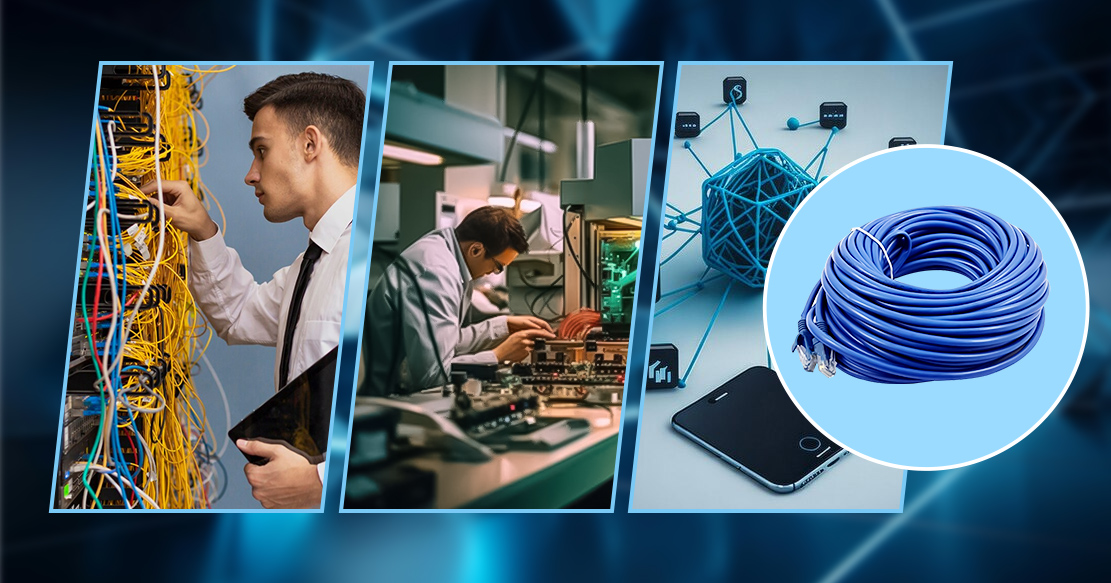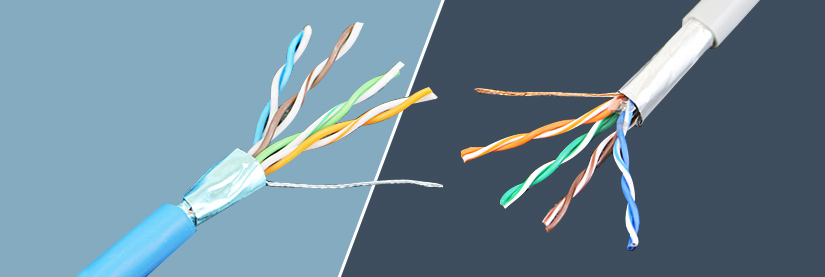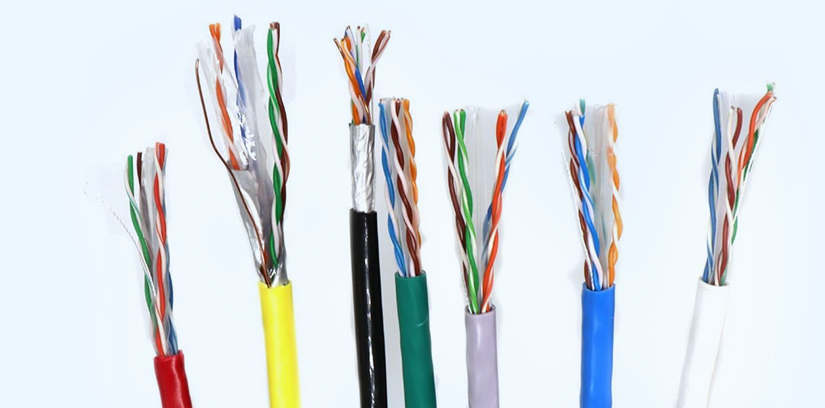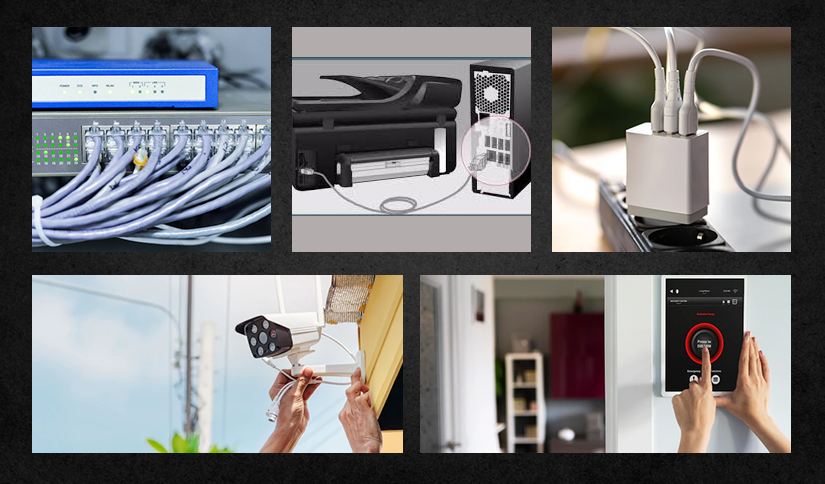
CAT 6 Cable: An Advancement of CAT 5 and CAT 5e
CAT6 Cable has become the primary requirement for network applications across homes and enterprises. The standards of CAT6 defined by the Electronics Industries Association and Telecommunication Industry Association make them suitable for installations to support Gigabyte network applications and bandwidth up to 250 MHz.
CAT 6 cables are upgraded forms of CAT5/5e made with different methods and materials and vary in their capabilities. These cables have the potential for higher speeds, less crosstalk and noise, and reliability at longer distances.
What does CAT6 Cable Mean?
CAT6 is short for category six and is an ethernet cable. The Electronics Industries Association and Telecommunication Industry Association define the standards and specifications of CAT6 Cables.
CAT6 is the sixth generation of twisted pair Ethernet cabling. The cable consists of four twisted pairs and is terminated by an RJ45 or terminated on a patch or a keystone jack.
CAT6 cables are used mainly for computer networks reaching 1 GB, 1000 Mbps, or 1 Gbps of data transfer speed or higher.
A few characteristics of CAT6 cable are

CAT6 consists of four pairs of copper wire that help in data transfer.

These cables provide a bandwidth of 250 MHz, speed up to 10Gbps, and can get stretched to 100 meters in length.

They provide more enhanced crosstalk and attenuation protection than its previous twisted pair cable versions.

CAT6 cables get support from Ethernet networks, including 10Base-T, 100Base-TX, 1000 Base-T, and 10GBase-T.
Difference between CAT6 and CAT5/CAT5e

CAT6 cables emerged as an advancement of the unshielded twisted pair CAT5e and got formalized in 2001. CAT6 cables are slowly becoming the minimum standard for cable installation. With more stringent precision in manufacturing, CAT6 has improved performance and reduced noise and crosstalk. CAT6 cables are thicker and have more insulation and shielding, making them more resistant to noise and interference. However, they are less flexible and hard to bend.
CAT6 provides greater bandwidth than CAT-5e and allows for higher data transfer rates. CAT5e cables can support up to 1 Gigabit per second of data transfer at a maximum frequency of 100 MHz. But CAT6 cables can support up to 10 Gbps of data transfer at a maximum frequency of 250 MHz. However, CAT6 cables can maintain this speed limit only if the cable length is less than 55 meters.
Pros and Cons of Using CAT5e and CAT6 Cables
Pros and Cons of using CAT5e cables
Pros

CAT5e cables are compatible with most existing network devices and ports and easily plugged without worrying about adapters or converters.

CAT5e cables are thinner and more flexible than CAT6 cables, making them easy to install and manageable in tight spaces or corners.
Cons

CAT5e cables are slower than CAT6 cables, which can limit your network performance and data transfer rate. It becomes a hurdle for streaming HD video, online gaming, and data transfer rates.

CAT5e cables are more susceptible to noise and crosstalk than CAT6 cables. It degrades the signal quality and causes errors or interruptions.
Pros and Cons of CAT6 Cables
Pros

CAT6 cables are faster than CAT5e cables and can boost your network performance and data transfer rate. It makes CAT6 suitable for high bandwidth applications, like video conferencing, cloud computing, or online gaming.

CAT6 is more reliable. The cables are more resistant to noise and interference than CAT5e cables, which can improve the signal quality and stability.
Cons

CAT 6 cables can increase network expenses and maintenance costs as they are more expensive than CAT5e cables.

They are incompatible with some older network devices and ports and demand adapters or converters used to connect them.
Types of CAT6 Cables

Here is the list of various types of CAT6 cables available.
 Shielded
Shielded
Shielded CAT6 cable or STP CAT6 cable is a twisted pair cable confined in a foil or mesh shield. The shield guards the cable against electromagnetic interference, ideal for high-speed networks such as data centers where 10GBase-T networks use—10GbE is more sensitive to EMI. We can use shielded cables in areas with high interference and running cables outdoors or indoors.
 Unshielded
Unshielded
The Unshielded CAT6 cable or UTP CAT6 cable gets twisted together with wires to reduce noise and crosstalk. These cables are applicable between your computer and the wall.
 Stranded
Stranded
Stranded CAT6 cable uses a series of copper cables twisted together. These cables are flexible. We can use them anywhere and often move the cable. Stranded cables have high attenuation and must be short to lower the chances of adding more attenuation to the system. The length of stranded patch cables should be under 6 meters. These cables are applicable for connecting workstation network interference cards and outlets or between concentrators and patch panels, hubs, and other rack-mounted equipment.
 Solid
Solid
Solid CAT6 cable uses a single piece of copper for the electrical conductor. These cables are not flexible like stranded cables but are durable and suitable for permanent installations, as well as outdoors and on walls.
 CAT6 CM Cables
CAT6 CM Cables
CAT6 CM (Communication Multipurpose) cables have the minimum jacket ratings suitable for in-wall installations. These cables are suitable for installation inside a residence or a single-story commercial building.
 CAT6 CMR Cables
CAT6 CMR Cables
CAT6 CMR cables are riser-rated cables that prevent fire from spreading from one floor to another. The fire resistance of these cables is much stricter than CAT6 CM cables and is more flame retardant.
 CAT6 CMP Cables
CAT6 CMP Cables
CAT6 CMP (Communication Multipurpose Cable Plenum) is a plenum-rated cable constructed to restrict flame propagation to not more than five feet and limit the smoke amount emitted during a fire.
Applications of CAT6 Cables in Various Scenarios

The list of various applications of CAT6 cables is as follows.

CAT6 cables dominate the home and enterprise network in conjunction with fiber optics.

Phone lines, CCTV cameras, and other networking devices use CAT6 cables.

CAT6 cables help connect a computer to another device like a hub, router, or switch and allow sharing of files across a network.

These cables connect the computer to other devices together, such as printers and scanners, or for incoming and outgoing LAN connections on patch panels.

CAT6 patch cable connects a home automation system to a router or switch, a smart TV to a router or switch, a home security system to a router or switch, etc.
CAT 6 Cable: A standard for Ethernet Based Computer Network
CAT 6 cable- the standard sixth-generation twisted pair cable, is a cost-effective option for Ethernet-based computer networks. Gloster Cables, a wire and cable manufacturing firm brings a range of CAT6 cables, such as shielded, unshielded, solid, stranded, CM, CMR, and CMP, to meet various needs of the network enterprises.
CONTACT US